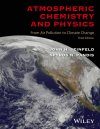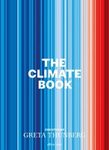About this book
Since the second edition of Seinfeld and Pandis' classic textbook, significant progress has taken place in the field of atmospheric chemistry and physics, particularly in the areas of tropospheric chemistry, aerosols, and the science of climate change. A new edition of this comprehensive work has been developed by the renowned author team. Atmospheric Chemistry and Physics, third edition, provides – as did the previous two editions – a rigorous and comprehensive treatment of the chemistry and physics of the atmosphere, including the chemistry of the stratosphere and troposphere, aerosol physics and chemistry, atmospheric new-particle formation, physical meteorology, cloud physics, global climate, statistical analysis of data, and mathematical chemical/transport models of the atmosphere. Each of these topics is covered in detail, and in each area the central results are developed from first principles. In this way the reader gains a significant understanding of the science underlying atmospheric processes and will be able to extend theories and results to solving real-world problems.
This third edition includes new chapters on atmospheric organic aerosols and global climate, as well as a significantly updated chapter on physical meteorology. Many chapters and topics have been updated and expanded from the second edition, including sections on the chemistry of biogenic hydrocarbons in the troposphere, especially isoprene chemistry; aqueous-phase organic chemistry; mechanisms of nucleation in the atmosphere; aerosol – cloud relationships; and the chemistry of mercury. A new section on positive matrix factorization is included that carefully develops this powerful statistical method for aerosol data analysis.
New problems have been added, especially ones at a basic level, to increase the utility of this text in classroom situations. All chapters develop results based on fundamental principles, enabling the reader to build a solid understanding of the science underlying atmospheric processes. Readers familiar with Atmospheric Chemistry and Physics will discover a text with many new and revised additions.
Atmospheric Chemistry and Physics, third edition, is an ideal textbook for upper-level undergraduate and graduate students, as well as a reference source for researchers in environmental and atmospheric science, chemistry, meteorology, and civil and environmental engineering.
Contents
Preface to the First Edition xxiii
Preface to the Third Edition xxv
PART I | The Atmosphere and Its Constituents
Chapter 1 | The Atmosphere 3
PART II | Atmospheric Chemistry
Chapter 2 | Atmospheric Trace Constituents 18
Chapter 3 | Chemical Kinetics 69
Chapter 4 | Atmospheric Radiation and Photochemistry 88
Chapter 5 | Chemistry of the Stratosphere 119
Chapter 6 | Chemistry of the Troposphere 175
PART III | Aerosols
Chapter 7 | Chemistry of the Atmospheric Aqueous Phase 265
Chapter 8 | Properties of the Atmospheric Aerosol 325
Chapter 9 | Dynamics of Single Aerosol Particles 362
Chapter 10 | Thermodynamics of Aerosols 396
Chapter 11 | Nucleation 448
Chapter 12 | Mass Transfer Aspects of Atmospheric Chemistry 493
Chapter 13 | Dynamics of Aerosol Populations 537
Chapter 14 | Atmospheric Organic Aerosols 573
PART IV | Physical and Dynamic Meteorology, Cloud Physics, and Atmospheric Diffusion
Chapter 15 | Interaction of Aerosols with Radiation 633
Chapter 16 | Physical and Dynamic Meteorology 661
Chapter 17 | Cloud Physics 708
PART V | Dry and Wet Deposition
Chapter 18 | Atmospheric Diffusion 763
Chapter 19 | Dry Deposition 829
PART VI | The Global Atmosphere, Biogeochemical Cycles, and Climate
Chapter 20 | Wet Deposition 856
Chapter 21 | General Circulation of the Atmosphere 891
Chapter 22 | Global Cycles: Sulfur and Carbon 908
Chapter 23 | Global Climate 931
PART VII | Chemical Transport Models and Statistical Models
Chapter 24 | Aerosols and Climate 970
Chapter 25 | Atmospheric Chemical Transport Models 1011
Chapter 26 | Statistical Models 1051
Problems 1085
References 1087
Appendixes
Index 1112
Customer Reviews
Biography
John H. Seinfeld, PHD, is Louis E. Nohl Professor at the California Institute of Technology. Dr. Seinfeld is a member of the U.S. National Academy of Engineering and the American Academy of Arts and Sciences, and a Fellow of the American Association for the Advancement of Science, the American Institute of Chemical Engineers, and the American Geophysical Union.
Spyros N. Pandis, PHD, is Professor of Chemical Engineering at the University of Patras, Greece, and EliasResearch Professor of Chemical Engineering and Engineering & Public Policy at Carnegie Mellon University.



































